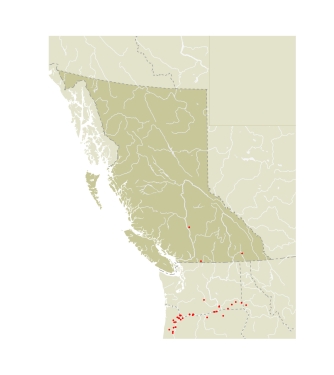AdultSachem males can be separated from similar species by the presence of a large black spot surrounding the stigma. This makes the centre of the dorsal forewing appear to be a large, square black area. Females have a translucent spot in the centre of the forewing that is not found in other BC skippers. In both sexes, the ground colour of the ventral hindwing is a tweedy green. The Sachem is most likely to be seen nectaring on garden composites in association with the Woodland Skipper, and is easy to overlook.
Immature StagesIn New England the egg is white and, according to Scudder (1889b), broad and short. The head of the mature larva is black, and the body is dark fuscous green, covered with dark tubercles, each with a short, fulvous hair. In California larvae, the hairs are black and the larvae have a mid-dorsal dark greenish brown line. The pupa has a white spot near the eye (Comstock 1929).
SubspeciesThe three stray BC specimens presumably belong to the nominate subspecies, A.c. campestris; TL: Sacramento, CA (Emmel et al. 1998a). Other migrant species that breed only east of the Rocky Mountains are known to occasionally reach southeastern BC, however, such as the Variegated Fritillary, Euptoieta claudia (Cramer, [1775]). Thus the stray BC specimen records could be the eastern subspecies.
